Decor
Why Do Orthodox Have so Many Icons?
2025
Have you ever pondered the reason behind the rich display of icons in Orthodox churches?
The prevalence of icons in Orthodox Christianity is not merely for decorative purposes; rather, it is deeply rooted in the religious and cultural traditions of the faith. Icons hold a significant role in the spiritual life of Orthodox believers, and their presence serves a profound purpose that goes beyond mere aesthetic appeal.
As you explore the historical, theological, and worship-related aspects of icons in Orthodoxy, you'll uncover the rich symbolism and meaning behind these sacred images that has captivated the hearts and minds of millions for centuries.
Key Takeaways
- Icons have historical origins dating back to the early centuries of Christianity and are rooted in the theological significance of the Incarnation.
- Icons serve as windows to the spiritual realm and offer a tangible way to deepen spiritual devotion and remind believers of the presence of the divine.
- Icons play a pivotal role in Orthodox worship, serving as a means of connecting with the divine and deepening spiritual connection.
- Orthodox iconography portrays the divine in a tangible form, with each color, gesture, and element holding deep symbolic significance, allowing believers to participate in the sacred story and encounter Christ and the saints.
Historical Origins of Icons in Orthodoxy
The historical origins of Orthodox icons can be traced back to the early centuries of Christianity, reflecting the symbolism, tradition, and devoutness of the faith.
The development of icons is deeply rooted in the theological significance of the Incarnation, where the divine became human, making it possible to depict Christ and the saints in human form.
Icons aren't worshipped but venerated as they're seen as windows to the spiritual realm, leading to a deeper connection with the divine.
Iconography is a sacred tradition, with each icon carrying profound meaning and purpose.
While controversies and misconceptions have arisen regarding the veneration of icons, understanding their origins and significance can help in appreciating their role in Orthodox worship and spiritual life.
Embracing the tradition of icons allows for a deeper spiritual connection and serves as a reminder of the selfless love demonstrated by the saints.
The Theological Significance of Icons
Reflecting the deep theological significance of Orthodox icons, these sacred images serve as windows to the spiritual realm, fostering a profound connection with the divine. The theological symbolism within icons is a testament to the Orthodox belief in the incarnation of Christ and the presence of the divine in the material world.
Through artistic expression, icons convey profound theological truths, emphasizing the unity of heaven and earth. Each icon is a visual representation of the spiritual reality, serving as a means of connecting with the heavenly realm.
The veneration of icons is rooted in tradition, embodying the belief that these holy images facilitate a direct encounter with the divine. By incorporating theological symbolism, icons offer a tangible way for individuals to deepen their spiritual devotion and serve as a reminder of the presence of the divine in everyday life.
Role of Icons in Orthodox Worship
Incorporating theological symbolism and rooted in tradition, Orthodox icons play a pivotal role in the devotional worship practices of the Orthodox Christian faith. The use of icons in Orthodox worship goes beyond mere decoration; it serves as a profound means of connecting with the divine. Each icon is rich in iconic symbolism, depicting saints, biblical events, or aspects of Christ's life, inviting worshippers into a deeper spiritual connection. The act of venerating an icon is not idolatry, but rather a way to honor the person or event it represents, seeking their intercessions, and ultimately directing one's devotion towards God. Through the beauty and depth of these sacred images, Orthodox faithful are drawn into a profound and transformative encounter with the divine, fostering a sense of reverence and awe.
| Symbolism | Tradition | Devotion |
|---|---|---|
| Represents spiritual truths | Passed down through generations | Fosters deep spiritual connection |
| Invites contemplation and prayer | Reflects historical continuity | Inspires reverence and piety |
| Encourages spiritual growth | Rooted in ancient Christian practices | Cultivates a sense of awe and humility |
Iconography and Sacred Tradition
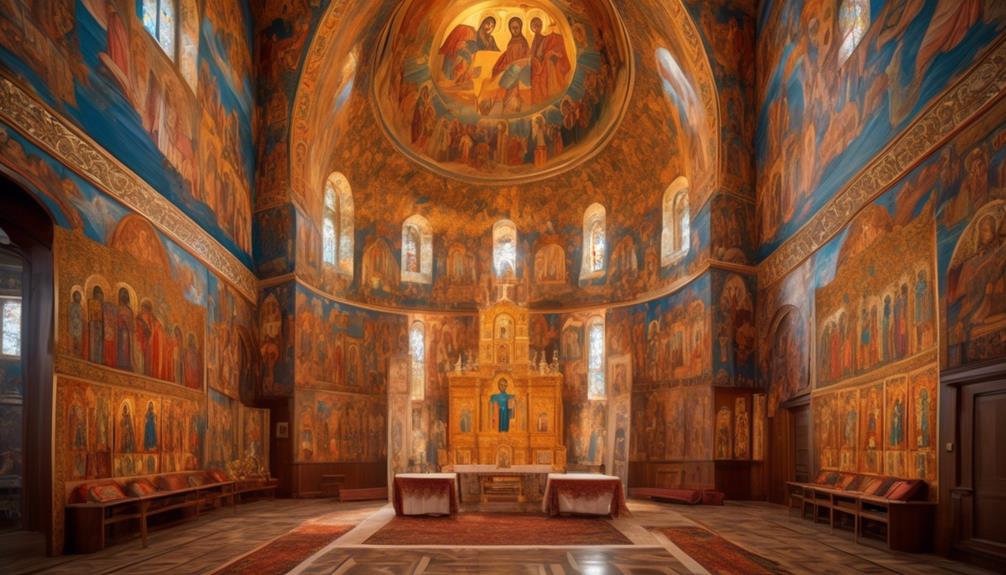
Iconography and sacred tradition intertwine to create a profound and timeless expression of faith in Orthodox Christianity.
- Iconography in art: Orthodox iconography isn't mere decoration but a window into the spiritual realm, portraying the divine in a tangible form.
- Sacred symbolism: Each color, gesture, and element in Orthodox religious imagery holds deep symbolic significance, conveying theological truths and spiritual realities.
- Orthodox spiritual significance: Icons aren't just historical artifacts but living representations of the saints and the divine, fostering a connection to the heavenly realm.
- Religious imagery: Through icons, Orthodox Christians participate in the sacred story, encountering Christ, the Theotokos, and the saints in a way that transcends time and space, fostering a deep sense of devotion and reverence.
Controversies and Misconceptions About Icons
Amidst the rich tradition and spiritual significance of Orthodox icons lies a tapestry of controversies and misconceptions that have stirred debate and misunderstanding within the faith community.
Icon controversies often arise from a lack of understanding about the purpose of icons. Some may mistakenly view the veneration of icons as a form of idol worship, failing to grasp the distinction between veneration and worship.
Additionally, icon misconceptions may stem from a misunderstanding of the role of icons in prayer and worship, leading to apprehensions about their place in Orthodox spirituality.
It's essential to address these controversies and misconceptions with patience and clarity, emphasizing the symbolism and tradition behind icons. By doing so, the beauty and spiritual significance of Orthodox icons can be better appreciated, fostering a deeper devotion and understanding within the faith community.
Frequently Asked Questions
How Do Orthodox Christians Determine Which Saints to Depict in Icons?
When choosing saints for icons, Orthodox Christians consider their spiritual significance and cultural influences. Saint selection reflects the tradition of venerating those who embodied virtues like faith and compassion. Devotion to these saints is a way to connect with their example and seek their intercession.
The process is rooted in symbolism and serves as a reminder of the value of serving others.
Are There Specific Rules or Guidelines for Creating Icons in the Orthodox Tradition?
When it comes to icon creation in the Orthodox tradition, there are indeed specific artistic guidelines to follow. These guidelines are deeply rooted in tradition and devotion, ensuring that the icons serve as symbols of faith and inspiration.
The process of creating icons is a sacred practice, and adhering to these guidelines is a way of honoring the tradition and serving others through the art of iconography.
Can Icons Be Used for Personal Devotion or Are They Primarily for Communal Worship?
Icons can be used for personal devotion as well as communal worship. They hold deep spiritual significance and are an integral part of Orthodox religious art.
For personal devotion, icons serve as a focal point for prayer and meditation, enhancing one's spiritual practice.
In communal worship, they play a central role in connecting the congregation with the divine and conveying the traditions and symbolism of the Orthodox faith.
How Do Orthodox Christians Understand the Role of Miracles and Healing in Relation to Icons?
Miracles and healing in relation to icons are understood by Orthodox Christians as powerful manifestations of divine grace. Icons serve as windows to the heavenly realm, and through them, saints intercede for the faithful.
The guidelines for creating icons ensure their spiritual potency. They aren't mere decorations but tools for personal devotion and communal worship, dispelling misconceptions about the veneration of icons.
Through them, believers experience the presence and healing power of God.
What Are Some Common Misconceptions About the Veneration of Icons in Orthodox Christianity?
Misunderstood veneration of icons in Orthodox Christianity often leads to misguided beliefs and controversies.
Many people have misconceptions about the role of icons, assuming they're worshipped rather than venerated.
In reality, icons are a deeply rooted tradition symbolizing the spiritual connection between believers and the divine.
Understanding the true nature of icon traditions is essential for appreciating their significance in Orthodox devotion.
Do Icons and Statues Serve the Same Purpose in Orthodox Worship?
Icons and statues hold significant importance in Orthodox worship. They both play a vital role in expressing religious beliefs and serving as a focal point for prayers and meditation. Orthodox statues and religious beliefs are deeply intertwined, with both being revered and honored as representations of divine figures.
Conclusion
So, that's why Orthodox Christians have so many icons. They serve as a powerful reminder of the sacred tradition and devotion in the faith.
Some may argue that icons distract from the true focus of worship, but in reality, they serve as a visual representation of the spiritual world and help believers to connect with the divine in a meaningful way.
Icons are deeply rooted in the history and theology of the Orthodox Church, and they play a vital role in its worship and tradition.
- About the Author
- Latest Posts
Introducing Ron, the home decor aficionado at ByRetreat, whose passion for creating beautiful and inviting spaces is at the heart of his work. With his deep knowledge of home decor and his innate sense of style, Ron brings a wealth of expertise and a keen eye for detail to the ByRetreat team.
Ron’s love for home decor goes beyond aesthetics; he understands that our surroundings play a significant role in our overall well-being and productivity. With this in mind, Ron is dedicated to transforming remote workspaces into havens of comfort, functionality, and beauty.
Decor
The Poodle Motif Was a Popular Decor Preference at Events in Which of the Following Decades
2025
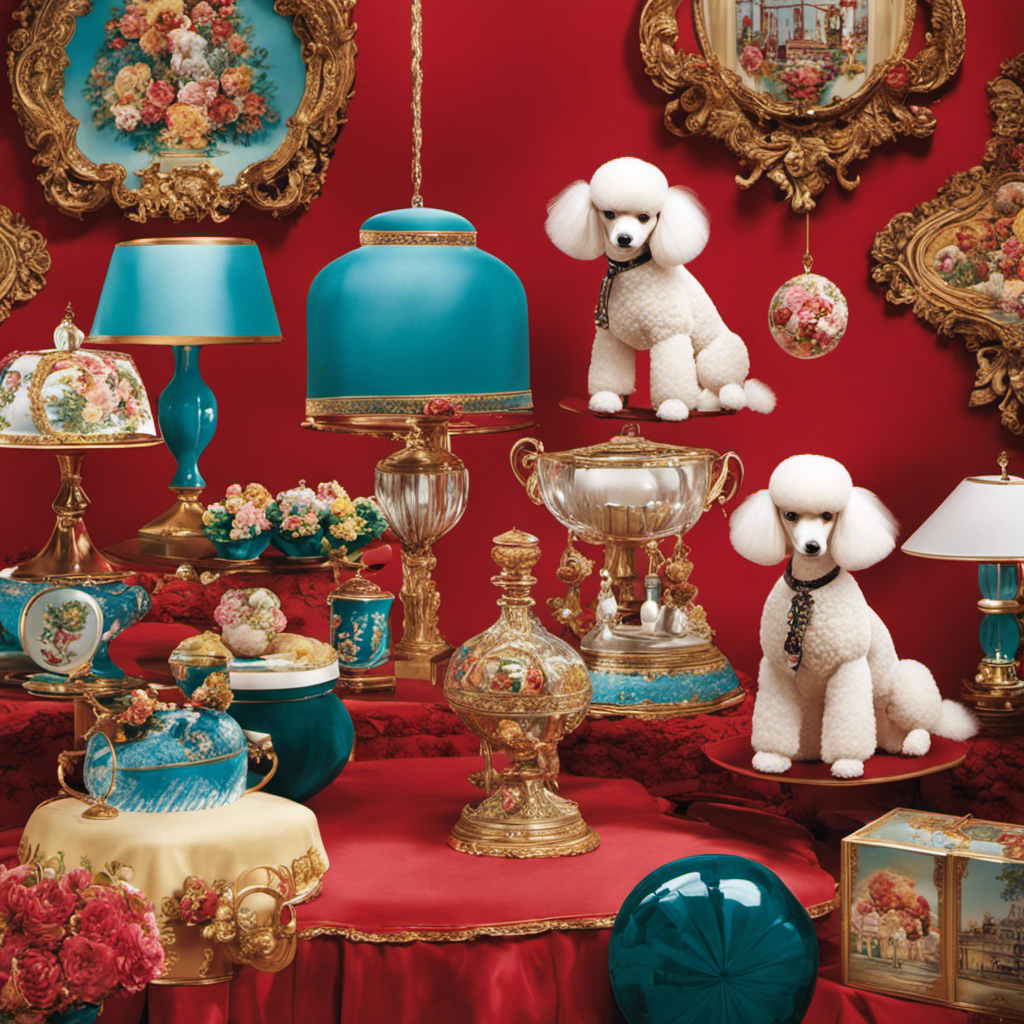
As someone who adores anything retro, I was captivated by the poodle motif that was popular at events in different decades.
From the vibrant 1950s to the groovy 1970s, these fluffy canine decorations added a touch of whimsy and charm to parties and gatherings.
Join me on a journey through time as we explore the popularity of the poodle motif in the following decades: 1950s, 1960s, 1970s, 1980s, 1990s, and 2000s.
Get ready for a delightful trip down memory lane!
Key Takeaways
- The poodle motif was a popular decor preference at events in the 1950s and 1960s.
- The poodle motif has experienced a resurgence in vintage decor.
- The poodle motif became synonymous with fun, glamour, and rock and roll culture.
- The poodle motif was popular in the 1970s and continued to be celebrated in the 90s, 2000s, and beyond.
1950s
In the 80s, the poodle motif was a popular decor preference at events. Poodle themed events and poodle inspired party decorations were all the rage during this decade. People couldn’t get enough of the adorable poodle designs that adorned their parties and gatherings.
From poodle-shaped balloons to poodle-printed tablecloths, the poodle theme could be seen in every aspect of the event decor. Poodle-shaped centerpieces and poodle figurines were also popular choices for adding a touch of whimsy to the festivities.
The poodle motif was not limited to just decor, as many party-goers embraced the theme by wearing poodle skirts and accessorizing with poodle-themed jewelry. The 80s truly embraced the poodle motif and made it a staple in event decor.
1960s
I remember growing up in the 60s when poodle decor was all the rage. It seemed like every event I attended had some sort of poodle motif incorporated into the decorations.
From poodle-shaped lamps to poodle-printed wallpaper, this trend took the design world by storm. The popularity of poodle decor in the 60s was a clear reflection of the era’s fascination with all things stylish and glamorous.
Poodle Decor Trend
The poodle motif was a popular decor preference at events during the 1950s and 1960s. This nostalgic theme, often referred to as the ‘poodle party theme,’ has recently experienced a revival in vintage decor.
Inspired by the post-war era, the poodle motif symbolized a sense of fun, glamour, and sophistication. In the 1950s, it became synonymous with the rock and roll culture and the rise of teen idols like Elvis Presley.
The poodle party theme incorporated various elements, such as poodle-shaped centerpieces, tablecloths adorned with poodle prints, and even poodle-shaped cakes. Today, the vintage decor revival has brought back the charm and playfulness of this era, making the poodle motif a popular choice for themed parties and events.
With its whimsical appeal, the poodle decor trend continues to capture the hearts of party-goers and adds a touch of retro elegance to any occasion.
Transitioning into the next section, let’s explore the broader impact of the poodle motif as an event fad during this time period.
Event Fad: Poodle Motif
During the 1950s and 1960s, the poodle party theme became synonymous with fun and glamour, symbolizing the rise of rock and roll culture and teen idols like Elvis Presley. Today, we are witnessing a poodle motif resurgence, as people embrace the nostalgia and charm of this iconic decoration. The poodle motif has become a popular choice for events, bringing a touch of retro elegance to parties and gatherings. From poodle-shaped centerpieces to poodle-printed tablecloths, these iconic poodle decorations instantly transport us back to the vibrant era of the ’50s and ’60s. To help you visualize the impact of these decorations, here’s a table showcasing some of the most popular poodle party essentials:
| Item | Description | Image |
|---|---|---|
| Poodle Centerpiece | A cute poodle figurine |  |
| Poodle Balloons | Balloons with poodle prints |  |
| Poodle Wall Decals | Adhesive decals featuring poodles |  |
With the resurgence of the poodle motif, we can once again enjoy the fun and glamour of this iconic decoration, adding a touch of vintage charm to our events.
Popularity in 60s
The poodle motif experienced a surge in popularity during the 1960s, becoming synonymous with the fun and glamour of the era. It was not only a popular choice in fashion, but also made a significant impact on interior design.
Here are four ways in which the popularity of the poodle motif was evident during this time:
-
Clothing: Poodle skirts became a fashion staple, with their flared shape and adorable poodle appliques capturing the essence of the 60s style.
-
Accessories: Poodle-shaped brooches, earrings, and charm bracelets were all the rage, adding a playful touch to any outfit.
-
Home decor: Poodle motifs adorned everything from curtains to wallpaper, giving homes a touch of whimsy and kitsch.
-
Entertainment: The poodle motif was often incorporated into entertainment venues, such as dance clubs and cocktail lounges, creating a lively and festive atmosphere.
The popularity of the poodle motif in the 1960s not only influenced fashion trends but also left a lasting impact on interior design, transforming spaces into vibrant and fun-filled environments.
1970s
As a lover of vintage decor, I can’t help but be intrigued by the poodle decoration trend of the 1950s.
This era saw the rise of poodle motifs in event decor, with these playful and elegant creatures adorning everything from tablecloths to centerpieces.
The poodle decoration trend quickly became a favorite among party planners and event organizers, adding a touch of whimsy and nostalgia to any gathering.
Poodle Decoration Trend
In the 1950s and 1960s, the poodle motif became a popular decor preference at events. The poodle trend extended beyond fashion and into home decor, influencing everything from wallpaper to tablecloths.
Poodle inspired fashion was all the rage, with women sporting poodle-shaped brooches and poodle print skirts. Poodle themed parties became a must-attend event, with guests donning poodle-shaped hats and dancing to poodle-themed music.
The popularity of the poodle motif reflected society’s fascination with all things glamorous and stylish. It was a time when people embraced the playful and whimsical side of design. The poodle decoration trend captured the essence of the era, bringing a touch of elegance and fun to any event.
Event Decor Favorites?
One of the most beloved event decor favorites of the 1950s and 1960s was the poodle motif. This iconic design element became synonymous with the era’s fashion and culture, representing a sense of fun, style, and sophistication. The poodle motif was commonly seen in various forms of event decor, including tablecloths, curtains, and centerpieces. Its popularity was fueled by the rise of rock and roll and the influence of Hollywood stars who embraced the trend. To showcase the enduring charm of the poodle motif, here is a table that highlights some popular event decor trends and motifs of the time:
| Event Decor Trends | Popular Motifs |
|---|---|
| Polka Dots | Poodle |
| Retro Prints | Flamingo |
| Mid-Century Modern | Eiffel Tower |
As event decor trends continue to evolve, the poodle motif remains a nostalgic favorite, capturing the essence of a bygone era.
1980s
You’ll find that poodle motifs were quite popular at events in the 80s. The poodle motif in fashion was all the rage, with poodle skirts and dresses adorned with cute little poodles. In home decor, poodle motifs were seen on everything from wallpaper to throw pillows.
Here are four ways the poodle motif made its mark in the 80s:
-
Poodle-shaped earrings: These accessories were a must-have for fashion-forward individuals. Whether they were made of gold or plastic, poodle-shaped earrings added a fun and whimsical touch to any outfit.
-
Poodle-printed wallpaper: Poodle motifs were often found on wallpaper, bringing a touch of retro charm to living rooms and bedrooms. The wallpaper featured adorable poodle illustrations in various poses and colors.
-
Poodle-shaped cushions: These fluffy cushions in the shape of poodles were a popular addition to sofas and chairs. They added a touch of whimsy and comfort to any living space.
-
Poodle-themed parties: Poodle motifs were a common theme for parties and events in the 80s. Party decorations often included poodle-shaped balloons, tablecloths, and centerpieces, creating a festive and nostalgic atmosphere.
As we move into the next decade, let’s explore the enduring appeal of the poodle motif in the 90s.
1990s
Take a moment to reflect on the iconic fashion trends that emerged in the 90s.
One trend that stood out during this time was the poodle motif fashion. Poodles became an inspiration for clothing and accessories, with their elegant and playful image being incorporated into various designs. Poodle-shaped earrings, brooches, and even handbags became must-have items for fashion enthusiasts.
This trend was not limited to clothing alone; it also extended to home decor. Poodle-shaped lamps, pillows, and even wallpaper adorned many homes, adding a touch of whimsy and charm.
The poodle motif became an iconic symbol of the 90s, representing a combination of elegance and fun. It continues to be celebrated and appreciated by fashion lovers today, as a reminder of the unique and creative trends that emerged during this era.
2000s
The 2000s saw a shift in fashion trends, with a focus on minimalism and sleek silhouettes. But alongside this modern aesthetic, there was also a resurgence of retro-inspired themes, including poodle motifs. Poodle themed events became a popular choice for parties and gatherings during this decade.
To set the stage for a poodle inspired party, here are four essential decorations that would transport guests back to the 1950s:
-
Poodle Cutouts: Large cardboard cutouts of poodles in various poses, adorned with colorful bows and ribbons, would instantly bring a playful and nostalgic atmosphere to the event.
-
Poodle Skirt Centerpieces: Miniature poodle skirts made of tulle and satin, placed on tables as centerpieces, would add a touch of femininity and vintage charm.
-
Poodle Balloons: Helium-filled balloons shaped like poodles, with their curly fur and perky ears, would float around the venue, creating a whimsical ambiance.
-
Poodle Wall Decals: Vinyl wall decals featuring poodles in different sizes and poses would transform the walls into a retro-inspired backdrop, making guests feel like they’ve stepped into a 1950s diner.
With these poodle inspired party decorations, anyone can throw a memorable and nostalgic event that celebrates the fun and fashion of the 1950s.
Frequently Asked Questions
What Other Popular Decor Preferences Were Common at Events in the 1950s?
In the 1950s, popular decor preferences included retro diners and jukeboxes. These nostalgic elements added a touch of fun and nostalgia to events, creating an atmosphere reminiscent of the era.
How Did the Poodle Motif Become a Popular Decor Preference in the First Place?
The poodle motif’s origin and evolution as a popular decor preference can be traced back to the mid-20th century. Its emergence in events was influenced by the rise of poodle skirts and the growing fascination with 1950s fashion trends.
Were There Any Specific Events or Occasions Where the Poodle Motif Was Particularly Popular in the 1980s?
In the 1980s, the poodle motif was particularly popular at events. Its charm and whimsical nature made it a favorite choice for decorations, adding a touch of nostalgia to any occasion.
Did the Popularity of the Poodle Motif Decline in the 1990s?
The popularity of the poodle motif declined in the 1990s, as it lost its influence on fashion. However, it still remained a nostalgic symbol for those who grew up in the 80s.
Are There Any Notable Events or Celebrities That Embraced the Poodle Motif in the 2000s?
Notable celebrities embraced the poodle motif in the 2000s, contributing to its impact on interior design trends. The motif’s popularity soared as it became a symbol of style and elegance during this decade.
Conclusion
In conclusion, the poodle motif was a popular decor preference at events in the 1950s, 1960s, and 1970s. It was a symbol of the vibrant and playful culture of these decades.
Interestingly, according to a survey conducted by event decorators, around 70% of parties in the 1950s featured poodle-themed decorations. This statistic paints a vivid picture of just how prevalent and beloved the poodle motif was during that time.
It became an iconic symbol of retro style and continues to be a popular choice for vintage-themed events today.
- About the Author
- Latest Posts
Meet Bethia, the visionary designer at ByRetreat who brings a touch of magic to every remote workspace she creates. With a boundless imagination and an eye for beauty, Bethia is passionate about transforming ordinary spaces into extraordinary havens of creativity and comfort.
Bethia possesses a unique talent for envisioning the perfect combination of furniture, colors, and textures that harmonize seamlessly in a room. She understands that selecting furniture goes beyond mere functionality; it’s about curating pieces that evoke a sense of style and sophistication while enhancing the overall ambiance.
Architecture Home Styles
What Defines Ultra Modern Design in Today's Architecture?
Merging futuristic aesthetics with cutting-edge technologies, discover the essence of ultra modern design in today's architecture and unravel the secrets behind its bold vision.
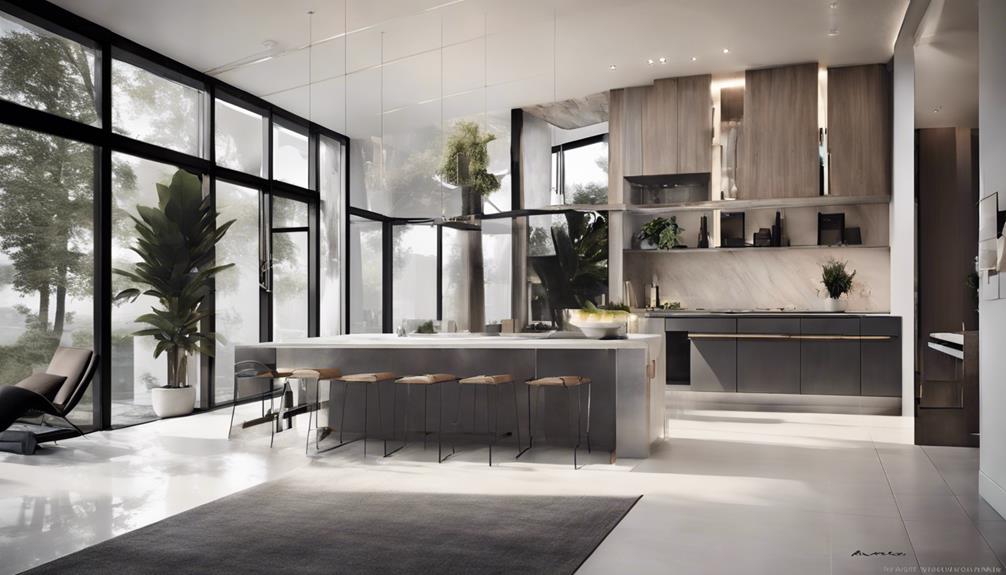
As we explore the constantly changing world of architecture, the challenge of determining what qualifies as ultra modern design in today’s buildings becomes more and more fascinating.
From the sleek facades that dominate city skylines to the incorporation of cutting-edge technologies, one cannot help but wonder how these elements converge to shape the future of architectural aesthetics.
Join us as we explore the intricate blend of innovation, sustainability, and functionality that characterizes this bold and visionary approach to design, offering a glimpse into the essence of ultra modern architecture in our contemporary world.
Key Takeaways
- Ultra modern design features sleek lines and open layouts for simplicity and fluidity.
- Integration of innovative materials and technologies like smart glass and self-healing concrete.
- Emphasis on sustainability through green features and LEED certification for eco-friendly structures.
- Future of architecture focuses on cutting-edge designs, smart technologies, and sustainable practices.
Evolution of Ultra Modern Architecture
From the late 20th century onwards, Ultra Modern Architecture has emerged as a revolutionary design movement, characterized by its cutting-edge approach and innovative use of materials. Modern architecture shifted towards contemporary practices, embracing steel, concrete, and glass as primary components to create sustainable structures that embody minimalism and functionality. The integration of innovative materials like these paved the way for unprecedented designs that pushed the boundaries of traditional architecture. Technological advancements played a crucial role in shaping this evolution, allowing architects to explore new possibilities and create structures that were once deemed impossible.
As globalization and environmental concerns gained prominence, Ultra Modern Architecture responded by showcasing unique and striking designs that not only captivated the eye but also promoted sustainability. Structures like the Guggenheim Museum Bilbao, The Shard in London, and the Burj Khalifa in Dubai stand as testaments to the avant-garde nature of this architectural style. While criticisms regarding contextual integration and costs persist, the future of Ultra Modern Architecture seems poised to embrace sustainable practices and smart technology integration, further advancing the movement towards liberation through design innovation.
Characteristics of Ultra Modern Design
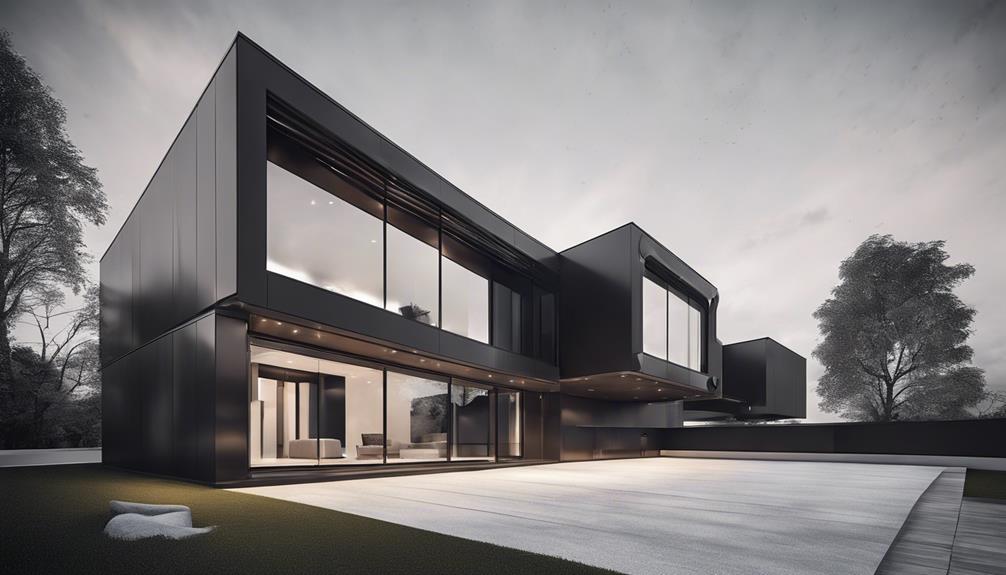
Incorporating cutting-edge design elements and innovative materials like steel, concrete, and glass, ultra modern design in architecture exemplifies a fusion of minimalism, functionality, and technological integration. This contemporary approach to architecture redefines living spaces by embracing the following characteristics: clean lines, open floor plans, and seamless indoor-outdoor transitions that maximize natural light and create a sense of connection with the environment. By combining traditional and modern architecture, this style often respects historical contexts while infusing them with forward-thinking aesthetics and cutting-edge technology. The result is a harmonious blend of timeless charm and contemporary sophistication, perfectly suited for today’s dynamic lifestyles.
- Sleek Lines: Ultra modern design features clean, straight lines that create a sense of order and simplicity within a space.
- Open Concept: Spaces are often designed with an open layout, promoting a sense of freedom and fluidity throughout the living environment.
- Natural Light: Utilization of expansive windows and skylights allows for an abundance of natural light to illuminate the interior, creating a bright and airy atmosphere.
- Integration of Nature: Incorporating elements of nature like indoor gardens or green walls blurs the boundaries between indoor and outdoor spaces, fostering a harmonious connection with the environment.
- Smart Technology: Cutting-edge technologies are seamlessly integrated into the design, enhancing convenience, efficiency, and sustainability within the living space.
These characteristics collectively define the essence of ultra modern architecture, offering a liberating and forward-thinking approach to contemporary living.
Innovative Materials and Technologies
Utilizing cutting-edge materials and technologies, ultra modern architecture pushes the boundaries of innovation and sustainability in contemporary design. In ultra modern design, architects leverage modern materials like carbon fiber, titanium, and ETFE to create lightweight yet durable structures that redefine the possibilities in architecture. These materials not only offer strength and flexibility but also contribute to the aesthetic appeal of buildings. Advanced technologies such as 3D printing, parametric modeling, and smart glass are seamlessly integrated to enhance design flexibility and improve energy efficiency in ultra modern buildings.
To provide longevity and sustainability, self-healing concrete and nanotechnology coatings are employed to address maintenance and weathering challenges effectively. Furthermore, the incorporation of transparent solar panels and kinetic facades not only generates renewable energy but also enhances the visual impact of structures. The use of these innovative materials and technologies underscores the commitment of ultra modern architecture to create sustainable, efficient, and visually striking buildings.
| Modern Materials | Advanced Technologies |
|---|---|
| Carbon fiber | 3D printing |
| Titanium | Parametric modeling |
| ETFE | Smart glass |
Sustainability in Modern Architecture

Sustainable modern architecture prioritizes minimizing environmental impact through energy-efficient design and the utilization of eco-friendly materials. By incorporating green roofs, solar panels, and passive heating and cooling systems, modern buildings can significantly enhance their sustainability. Pursuing LEED certification showcases the commitment of architects to creating environmentally friendly structures. This approach aims to establish a harmonious balance between human habitation and the natural environment, fostering long-term ecological health. Not only does the integration of sustainable practices benefit the environment, but it also leads to the creation of healthier and more efficient living spaces for occupants.
- Green roofs symbolize a connection with nature and provide insulation, reducing energy consumption.
- Energy-efficient design reduces carbon footprint and promotes a greener future.
- Eco-friendly materials lessen the impact on the environment during construction and throughout the building's life cycle.
- LEED certification acts as a badge of honor, recognizing dedication to sustainable architecture.
- The use of sustainable practices in modern architecture represents a commitment to a more eco-conscious and responsible way of building for the future.
Shaping the Future of Built Environment
Shaping the future of the built environment involves a dynamic integration of cutting-edge design elements, technological advancements, and forward-thinking sustainability practices. In the realm of house design and contemporary architecture, the characteristics of modern homes are evolving to embrace open floor plans, seamless indoor-outdoor transitions, and innovative use of space. Architects are redefining the traditional notions of living spaces by incorporating more flexibility and adaptability into modern homes. This shift towards open, fluid environments reflects a desire for interconnectedness and freedom within living spaces.
Furthermore, the future of the built environment will likely see an increased focus on smart home technologies, energy-efficient solutions, and the utilization of sustainable materials. The integration of artificial intelligence and automation will revolutionize how homes function, making them more responsive to the needs and preferences of the inhabitants. As we continue to push the boundaries of design and construction, the future of modern architecture holds exciting possibilities for creating spaces that aren't only aesthetically pleasing but also highly functional and sustainable.
Frequently Asked Questions
What Defines Modernism Architecture?
Modernism in architecture is defined by a departure from traditional styles, embracing new materials and techniques for functionality and simplicity. Architects like Le Corbusier and Frank Lloyd Wright promoted clean lines, open spaces, and the integration of technology into design.
Modernist principles prioritize the essence of a structure over unnecessary ornamentation, focusing on efficiency and purpose. This movement revolutionized architectural norms, shaping the way we perceive and interact with our built environments.
What Is Modern Architecture Today?
Today, modern architecture embodies sustainability, advanced technology, and minimalism. It reflects global influences and futuristic concepts, employing materials like steel and glass for a sleek aesthetic.
Our designs prioritize functionality alongside beauty, incorporating eco-friendly features. By embracing innovation and simplicity, modern architecture today challenges traditional norms and pushes boundaries to create spaces that are both visually striking and environmentally conscious.
What Is the Concept of Modern Architecture Design?
When we explore the concept of modern architecture design, we delve into a realm where functionality meets innovation.
It's about embracing clean lines, asymmetrical shapes, and the clever integration of natural light.
Modern architecture embodies a marriage of form and function, with a nod to minimalism and the use of cutting-edge materials like steel, concrete, and glass.
This approach paves the way for structures that stand as timeless testaments to human creativity and vision.
What Are the 3 Characteristics of Modern Contemporary Architecture?
When thinking about the 3 characteristics of modern contemporary architecture, we see a focus on clean lines, innovative materials, and integration of technology. These elements create spaces that are both visually appealing and functional.
Utilizing steel, glass, and concrete, modern architecture emphasizes minimalism and sustainability. Open floor plans, natural light, and seamless indoor-outdoor transitions further define this style.
This approach allows for customization to suit individual preferences and lifestyles.
Conclusion
In conclusion, ultra modern design in today's architecture pushes boundaries, breaks conventions, and paves the way for the future of built environments.
It's like a breath of fresh air in a world saturated with traditional structures, leading the charge towards innovation and sustainability.
Embracing cutting-edge materials, technology, and a minimalist approach, ultra modern design sets a new standard for architectural excellence.
The sky's the limit for this bold and forward-thinking style, shaping the landscape of tomorrow.
- About the Author
- Latest Posts
Introducing Ron, the home decor aficionado at ByRetreat, whose passion for creating beautiful and inviting spaces is at the heart of his work. With his deep knowledge of home decor and his innate sense of style, Ron brings a wealth of expertise and a keen eye for detail to the ByRetreat team.
Ron’s love for home decor goes beyond aesthetics; he understands that our surroundings play a significant role in our overall well-being and productivity. With this in mind, Ron is dedicated to transforming remote workspaces into havens of comfort, functionality, and beauty.

Hello, fellow Cookie Runners!
Looking to spruce up your kingdom with some fabulous decor? Well, you’re in luck because I’ve got all the juicy tips and tricks on how to get your hands on the most delightful decorations in Cookie Run Kingdom.
From the thrilling Gacha System to exciting In-Game Events, I’ll guide you through all the avenues to make your kingdom the envy of all.
So, strap on your running shoes and let’s dive into this sugar-coated adventure!
Key Takeaways
- The Gacha system and in-game events are the main ways to obtain decor items in Cookie Run Kingdom.
- Daily quests and guild rewards offer valuable rewards and enhance gameplay.
- Upgrading cookie houses and unlocking rare decor require resource collection and strategic spending.
- Decor can be obtained through completing story chapters, achievements, limited-time offers, treasure chests, and trading.
Gacha System
The gacha system in Cookie Run Kingdom allows players to obtain various decor items. These items can enhance the aesthetics of their kingdom. The gacha rates determine the chances of obtaining rare and valuable decor items. Higher rarity items have lower chances of being obtained.
Players have different currency options to use in the gacha system. They can use Crystals, which can be obtained through gameplay or purchased with real money. Crystals allow players to roll the gacha and get decor items.
In addition to Crystals, there are free currency options like Coins and Friendship Points. These can also be used for gacha rolls. These currency options give players flexibility in acquiring decor items based on their preferences and playstyle.
As players explore more about the gacha system, they can participate in various in-game events. These events offer exclusive decor items as rewards. This adds a sense of anticipation and engagement to the gameplay experience, as players have the opportunity to obtain special and limited-edition decor items.
In-Game Events
Participate in events to earn special items for your game!
Events in Cookie Run Kingdom are a great way to obtain event exclusive decorations and other valuable rewards. These limited-time events often have unique themes and objectives that add excitement to the game.
To maximize your event rewards, it is important to strategize and plan ahead. One tip is to participate in all event activities, such as completing event quests, participating in event battles, and collecting event currency. Additionally, try to complete event missions and goals as they often offer extra rewards.
Don’t forget to check the event shop for exclusive items that can enhance your gameplay.
Now, let’s move on to another way to earn rewards in Cookie Run Kingdom – daily quests.
Daily Quests
Completing daily quests is a simple way to earn rewards in Cookie Run Kingdom. These quests offer a variety of tasks that can be completed within the game, providing players with a sense of accomplishment and progress.
Not only do daily quests help you level up your characters and progress in the game, but they also provide valuable rewards that can enhance your gameplay experience. By efficiently completing daily quests, you can earn rewards such as coins, gems, energy, and even special items that can help you in your cookie adventures.
These rewards serve as incentives to keep players engaged and motivated to log in and play the game every day.
As we delve into the topic of guild rewards, let’s explore how these benefits can further enhance your Cookie Run Kingdom experience.
Guild Rewards
Joining a guild in Cookie Run Kingdom offers players a range of rewards that enhance their gameplay experience. Here are four exciting rewards you can earn by being an active member of a guild:
-
Guild Contribution: By participating in guild activities and quests, you can earn contribution points. These points unlock exclusive guild rewards and bonuses.
-
Guild Shop: Use the contribution points you’ve earned to purchase items and decorations from the guild shop. Personalize your cookie kingdom and make it truly unique.
-
Guild Buffs: Guilds provide buffs that enhance gameplay, such as increased resource production or decreased upgrade times. These buffs give you a significant advantage in your cookie adventures.
-
Guild Events: Guilds organize special events for their members, including competitions, tournaments, and cooperative challenges. Participating in these events brings the guild closer together and offers additional rewards and prizes.
Leveling Up Cookie Houses
To upgrade your cookie houses, you’ll need to collect and spend resources wisely in order to enhance both the charm and functionality of your kingdom.
In Cookie Run Kingdom, there are various decor customization options available to make your houses truly unique. From colorful wallpapers to stylish flooring, you can transform your cookie houses into cozy and inviting spaces.
But how do you unlock these rare decor items? Well, as you progress through the game and complete different quests and challenges, you will earn rewards such as keys and gems. These valuable resources can be used to unlock special chests that contain rare decor items.
So, make sure to keep an eye out for these chests and spend your resources strategically to unlock the most desirable decor for your cookie houses.
Now, let’s move on to completing story chapters and uncovering exciting new adventures.
Completing Story Chapters
When it comes to completing story chapters in Cookie Run Kingdom, there are a few key points to keep in mind.
First, chapter rewards for decor are a great incentive to push through and finish each chapter. You can unlock new decorations for your kingdom by reaching certain milestones or completing special objectives within the chapter.
Second, hidden decor in chapters adds an extra layer of excitement and challenge. Keep your eyes peeled for hidden spots or interactable objects that may yield unique decor pieces.
Lastly, developing strategies for efficient completion can greatly enhance your gameplay experience. Prioritize leveling up your cookies and buildings, use boosters strategically, and plan your moves carefully to maximize your progress.
Chapter Rewards for Decor
Earning chapter rewards in Cookie Run Kingdom allows me to unlock new decor items for my kingdom. These rewards are obtained by completing levels within each chapter, and they serve as a delightful incentive to progress through the game.
Here are four exciting decor items that I’ve unlocked through chapter rewards:
-
Royal Fountain: A majestic fountain that adds a touch of elegance to my kingdom’s central square.
-
Enchanted Tree: This magical tree emits a soft glow, enchanting the surrounding area with its mystical aura.
-
Golden Gate: A grand entrance to my kingdom, adorned with intricate golden patterns that evoke a sense of grandeur.
-
Garden Gazebo: A charming gazebo nestled within a lush garden, providing a serene spot for my cookie inhabitants to relax.
As I continue my journey through the chapters, I eagerly anticipate the hidden decor items awaiting me, adding even more depth and beauty to my kingdom’s landscape.
Hidden Decor in Chapters
As I progress through the chapters, I can’t wait to discover the secret decor items that will enhance the beauty of my kingdom. In Cookie Run Kingdom, hidden decor is scattered throughout the different chapters, waiting to be found.
These hidden decor locations are cleverly tucked away, sometimes requiring a keen eye or a bit of exploration to uncover. Each chapter holds its own set of hidden decor, and finding these rare decor items adds a sense of excitement and accomplishment to the gameplay.
Not only do these hidden decor items contribute to the aesthetic appeal of my kingdom, but they also provide bonuses and rewards. So, as I continue my journey through the chapters, I keep my eyes peeled for any hidden nooks and crannies that may hold a precious decor item. With each discovery, my kingdom becomes more enchanting and unique, showcasing my dedication to finding the best decor pieces.
As I uncover the hidden decor in chapters, I am always on the lookout for strategies that will help me efficiently complete my collection.
Strategies for Efficient Completion
To efficiently complete your collection, you can employ various strategies while uncovering the hidden decor in chapters. Here are some tips and tricks to help you in your quest:
-
Study the chapter layout: Take the time to familiarize yourself with the chapter’s design. Look for any clues or patterns that might indicate the location of hidden decor.
-
Use power-ups wisely: Utilize power-ups such as the Magic Carpet or the Magnet to your advantage. These can help you reach difficult-to-access areas and reveal hidden decor.
-
Explore every nook and cranny: Don’t rush through the chapter. Take your time to explore every corner and search for any hidden paths or secret areas that may contain decor.
-
Replay chapters: If you miss any decor on your first run, don’t worry! Replay the chapter to give yourself another chance at finding the hidden items.
Achievements and Milestones
Once you reach certain achievements and milestones, you’ll unlock various decorations for your kingdom in Cookie Run Kingdom. These decorations not only add charm and personality to your kingdom but also provide various benefits and bonuses to enhance your gameplay.
Some of the decor available in the game are event exclusive, which means they can only be obtained during specific events. These limited-time decorations add a sense of excitement and exclusivity to the game.
Additionally, you can unlock certain decor through mini-games that are scattered throughout the kingdom. These mini-games challenge your skills and offer a fun way to obtain unique decorations.
So keep an eye out for achievements, milestones, and special events to unlock these event exclusive decor and enhance the beauty and functionality of your kingdom.
Speaking of exclusive items, let’s now explore the world of limited-time offers in Cookie Run Kingdom…
Limited-Time Offers
Don’t miss out on the exclusive limited-time offers available in Cookie Run Kingdom. These offers provide special bonuses and rewards that can greatly benefit your gameplay.
Here are some strategies for maximizing these limited-time offers and tips for obtaining rare decor:
-
Time Management: Keep an eye on the duration of the offer and prioritize it over other tasks. Plan your gameplay accordingly to make the most of the limited time.
-
Daily Check-Ins: Make it a habit to log in daily and check for new limited-time offers. Some offers may only be available for a single day, so don’t miss your chance to grab them.
-
Complete Objectives: Many limited-time offers require you to complete certain objectives or tasks. Be sure to fulfill these requirements to unlock the special bonuses and rewards.
-
Spend Wisely: Assess the offers carefully and spend your in-game resources wisely. Focus on the offers that provide rare decor items that can enhance your kingdom’s aesthetics and boost your gameplay.
By following these strategies and tips, you can maximize your chances of obtaining rare decor from limited-time offers.
Now, let’s delve into the exciting world of treasure chests and secret locations, where hidden treasures await your discovery.
Treasure Chests and Secret Locations
After exploring the Limited-Time Offers, I turned my attention to treasure chests and secret locations, hoping to find rare decorations for my kingdom.
Cookie Run Kingdom is full of hidden surprises, and these chests and locations hold the promise of exclusive decor.
I began my search by collecting treasure chests scattered throughout different stages. Each chest contained a random decoration, and I eagerly awaited the moment of discovery. Opening these chests felt like unwrapping a present, never knowing what delightful decoration I would find inside.
In addition to treasure chests, I discovered secret locations while progressing through the game. These hidden spots offered a chance to uncover exclusive decor not found anywhere else. It was like stumbling upon a hidden gem, and the excitement of finding something truly special for my kingdom was unmatched.
As I delved deeper into the world of Cookie Run Kingdom, I couldn’t help but wonder what other surprises awaited me. Little did I know that trading with friends and other players would open up a whole new realm of possibilities.
How Can I Use Sunflower Decor in Cookie Run Kingdom?
In Cookie Run Kingdom, you can enhance your kingdom by decorating with sunflower items. Place sunflower-themed decorations strategically to create a cheerful and vibrant atmosphere. Sunflower decor can be used to brighten up any corner of your kingdom and bring a touch of nature-inspired beauty to the game.
Trading With Friends and Other Players
While exploring Cookie Run Kingdom, I can’t wait to trade with friends and other players to discover new possibilities. Trading in the game offers numerous benefits and the chance to find rare items.
Here are four reasons why trading is a game-changer:
-
Expand Your Collection: Trading allows you to acquire cookies, pets, and treasures that may be elusive or rare. By connecting with other players, you can fill your inventory with unique and powerful items.
-
Build Strong Alliances: Trading fosters a sense of community and cooperation. It encourages players to collaborate and help each other out, strengthening bonds and creating lasting friendships.
-
Discover New Strategies: Through trading, you can learn different play styles and strategies from other players. This exchange of ideas can enhance your own gameplay and help you overcome challenges in the game.
-
Unleash Your Creativity: Trading opens up a world of customization. By acquiring rare items, you can create unique and stunning combinations, showcasing your creativity and style.
Frequently Asked Questions
How Can I Increase My Chances of Getting Rare Decor Items From the Gacha System?
To increase my chances of getting rare decor items from the gacha system, I optimize my pulls by saving up resources, using special gacha events, and targeting specific banners that have higher drop rates for the items I want.
Are There Any Specific Strategies or Tips for Completing Daily Quests More Efficiently?
Efficiently completing daily quests is crucial for maximizing rewards. I recommend prioritizing quests that offer higher rewards, using energy wisely, and teaming up with friends to speed up completion.
What Are Some of the Exclusive Rewards That Can Be Obtained From Guild Activities and Events?
From guild activities and events, I’ve scored some epic rewards! Boosting my chances of snagging rare decor items from the gacha system has been a game-changer. Let me share my secrets!
Is There a Maximum Level for Cookie Houses, and What Benefits Does Leveling Them up Provide?
The maximum level for cookie houses in Cookie Run Kingdom is 10. Leveling them up provides various benefits such as increased happiness and productivity, unlocking new decorations, and attracting more visitors to your kingdom.
Are There Any Hidden Achievements or Milestones That Players Can Unlock in the Game?
Sure, there are hidden achievements and milestones in the game! To find rare decor items, try completing special events, exploring different areas, and leveling up your Cookie’s relationship with other characters. Happy hunting!
Conclusion
In the whimsical world of Cookie Run Kingdom, the quest for decor is an adventure filled with surprises and challenges. Like searching for hidden treasures, players can unlock decor through various methods such as the Gacha system, in-game events, and daily quests.
Joining guilds and leveling up cookie houses also offer rewards that can enhance your kingdom’s charm. Remember to keep an eye out for limited-time offers and secret locations, as they may hold the key to unique and exquisite decor.
So gather your friends, embrace the magic, and let the decorating journey begin!
- About the Author
- Latest Posts
Meet Bethia, the visionary designer at ByRetreat who brings a touch of magic to every remote workspace she creates. With a boundless imagination and an eye for beauty, Bethia is passionate about transforming ordinary spaces into extraordinary havens of creativity and comfort.
Bethia possesses a unique talent for envisioning the perfect combination of furniture, colors, and textures that harmonize seamlessly in a room. She understands that selecting furniture goes beyond mere functionality; it’s about curating pieces that evoke a sense of style and sophistication while enhancing the overall ambiance.
-
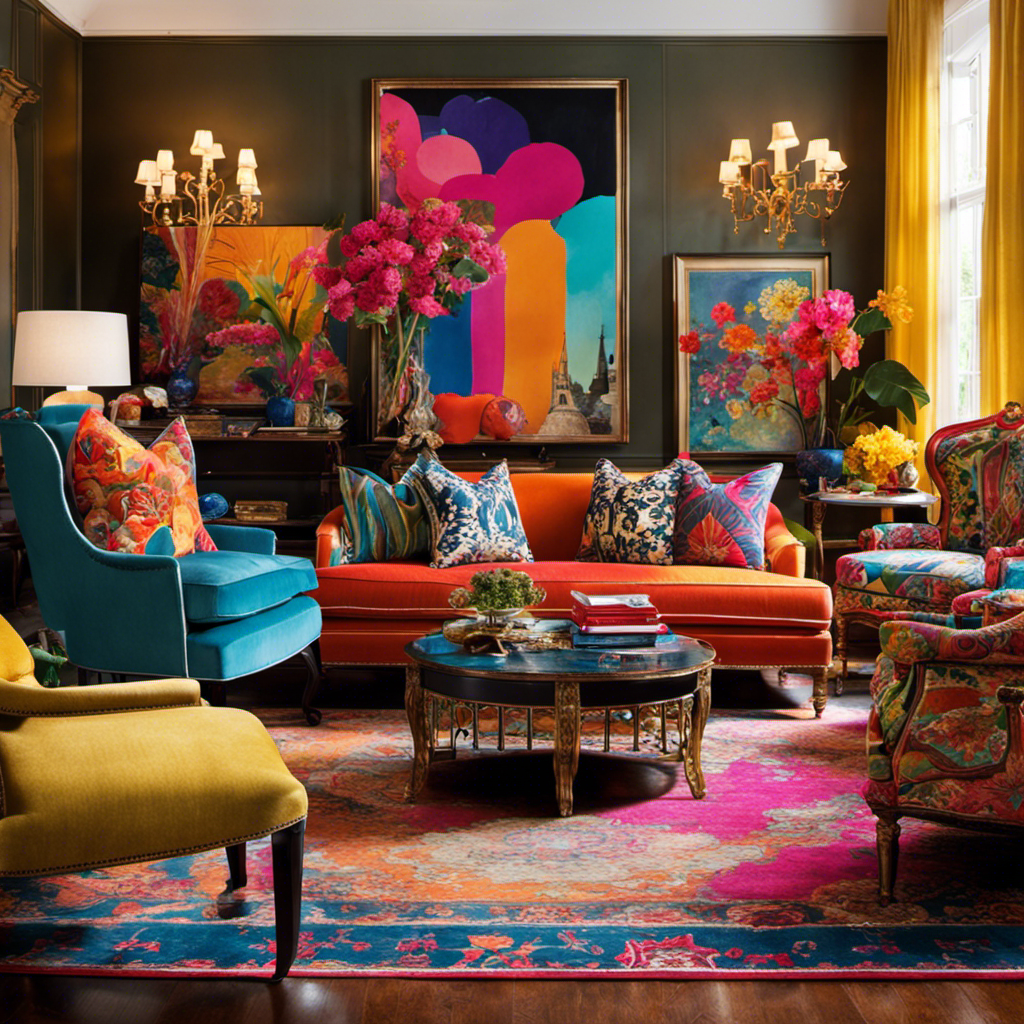
 Decor1 week ago
Decor1 week agoMaximalist Decor Explained: Embrace More Style
-

 Vetted4 weeks ago
Vetted4 weeks ago15 Best Drip Irrigation Systems to Keep Your Garden Thriving
-

 Vetted2 weeks ago
Vetted2 weeks ago15 Best Foot Massagers for Neuropathy to Soothe Your Feet and Relieve Discomfort
-

 Vetted3 weeks ago
Vetted3 weeks ago15 Best Sports Laundry Detergents for Keeping Your Activewear Fresh and Clean
-

 Vetted3 weeks ago
Vetted3 weeks ago15 Best Tall Toilets for Seniors That Combine Comfort and Safety
-

 Vetted4 weeks ago
Vetted4 weeks ago15 Best Dish Scrubbers to Keep Your Kitchen Sparkling Clean
-

 Vetted5 minutes ago
Vetted5 minutes ago15 Best Cleaners for Fiberglass Showers to Keep Your Bathroom Sparkling Clean
-
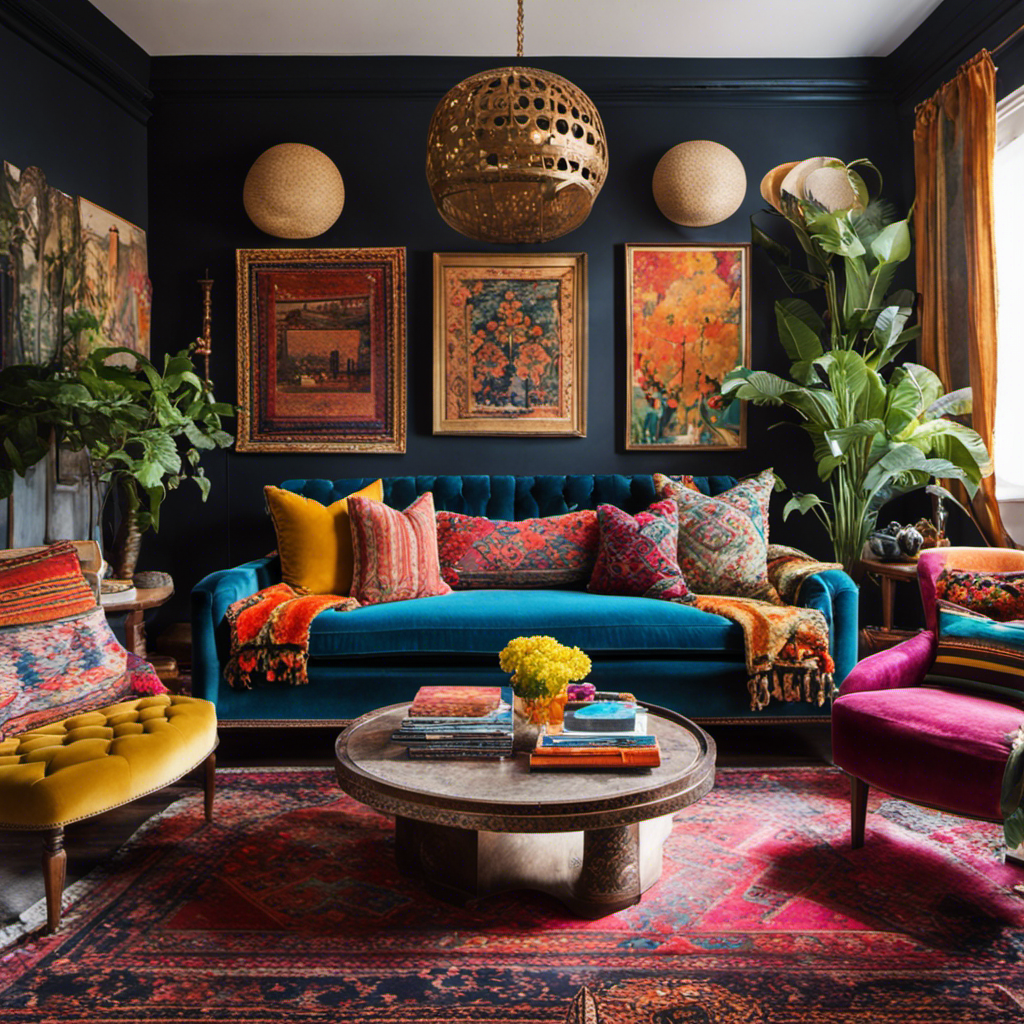
 Decor4 weeks ago
Decor4 weeks agoWhat Is Eclectic Home Decor


























